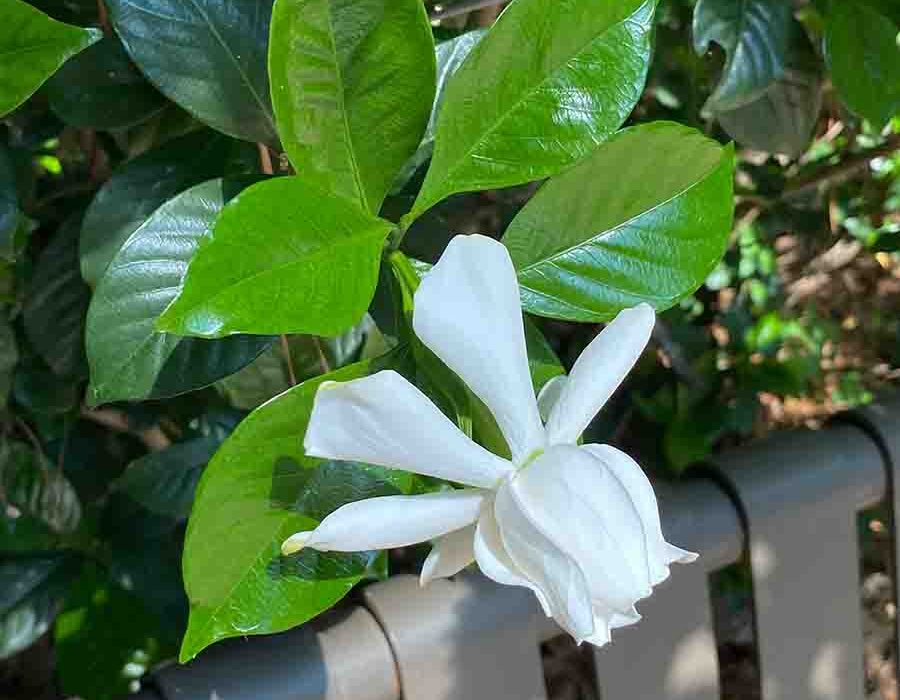Have you ever wondered lately if things are ever going to return to normal? Whether it is world, national, regional or local news, there’s always something that seems not quite right. As a backdrop to all this, climate challenges just keep stacking up. Debris removal is a part of that. Large dead trees are a headache and take time, money and energy to remove. If they are not cleared, then they shed branches and become “dead soldiers” in our view, all adding to urban blight. The move-ment to climate-resilient urban landscapes is obviously rational. It’s all about choices.
Urban landscapes need a redo, and we need to consider using climate-resilient plants in those designs. The horticul-ture industry needs to invest time and money to identify nursery crops that can survive the climate extremes that are becoming more common.
Through the years, the SFA Gardens have been diligent in planting and documenting a wide range of genus, species and cultivars. My last article (Texas Gardener, May-June 2023) highlighted several shrub species that have done well for us. This article delves into the tree species that we believe hold promise for homeowners trying to garden in a climate that is tough and only getting tougher.
Acer (maples): The SFA Gardens Japanese maple collection is one of best in the South, and there’s a good representation of rarely encountered Asian species. In general, most of the Acers suffered zero damage. More than 300 Japanese maples have emerged unscathed. However, the evergreen maples (including A. fabri, A. cinnamomifolium and A. ob-longum) generally rated a 4 or 5 on the damage scale. While recovering, they remain ugly. A real surprise, A. saccharum ssp. skutchii, the Mexico mountain sugar maple, suffered very little damage.
Actinidia (kiwifruit): While not a tree, kiwifruit is a high-dollar specialty crop that we are studying for production in Texas. We believe kiwifruit is a great crop for the home gardener to try. SFA Gardens and Texas A&M AgriLife have co-operated on a kiwifruit-evaluation project for several years. For the most part, golden kiwifruit survived the freeze better than the green variety, and young plants fared worse than older vines. A trunk-protection study happened to be in place with temperature dataloggers during winter storm Uri and concludes such protection was of little to no benefit.
Conifers: In general, conifers showed a good survivability over a wide range of genera, including Taxus, Cephalotaxus, Thuja, Thujopsis, Cunninghammia and Juniperus. Some damage occurred on our three Keteleeria species (and there was some nomenclature debate on our collection). A large K. evelyniana was killed back to its trunk and a few major branches. A very large (40-foot) Araucaria araucana var. angustifolia survived with some damage and new growth sprouted from its trunk, but the crown appeared unaffected. Cunninghammia unicanaliculata (botanically challenged as a subspecies of C. lanceolata) weathered a severe ice load and rebounded to good form without damage.
Magnolia: We have an extensive collection of varieties. The natives (M. grandiflora, M. acuminata, M. pyramidata, M. virginiana and M. macrophylla) showed no freeze damage. However, some damage occurred from snow/ice load. Deciduous Asian magnolias fared well, but many evergreen Asian magnolias were badly damaged or killed.
Quercus: SFA Gardens holds an extensive collection of oaks. Damage to post oaks and live oaks emerged in the region, but it remained quite random. Some trees were affected, others not. Most Mexican oaks in our collection survived in the landscape and in containers. Exceptions included Q. germana, which suffered limb die-back and unthrifty growth. Q. tarahumara froze back to its main trunk and some side limbs. Q. insignis froze to near ground level but rebounded. Q. rysophylla, Q. polymorpha, Q. canbyi, three Mexican oaks becoming more common in the Texas trade, all survived. A very large Q. acutissima died with no attempt at resprouting.
Taxodium (bald cypress): We have a very large collection representing varieties and selection material of bald cypress, pond cypress, Montezuma cypress and the bald x Montezuma hybrids from the Nanjing Botanical Gardens Taxodium Breeding and Improvement program. No damage occurred from the two freeze events. This was a critical test of pure Montezuma genetics involving southern Mexico genotypes and, as a whole, they passed.
Ulmus parvifolia (Chinese lacebark elm): Most Ulmus species were unaffected. However, in Texas, some large U. parvifolia trees sustained severe damage to major limbs and cracked trunks.
As the last three years have shown, extreme weather events that affect Texas landscape species are becoming more frequent. With this in mind, it is time to consider changing the way we view certain plant species. Perennials in general, and specifically trees, are expensive and take time to mature in our landscapes. With that in mind, it will pay to do a little climate-resilience research before you replace your freeze- or drought-damaged plants with the same old thing. tg
Dr. David Creech
Director, SFA Gardens, Stephen F. Austin State University, Nacogdoches, Texas

